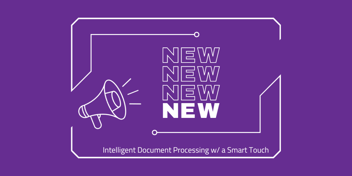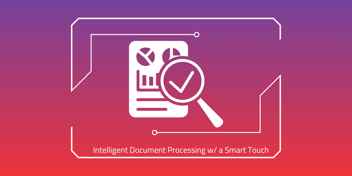Various challenges can arise in the processing of fiscal receipts, including exceeding the value limits between 100 and 400 euros, errors in manual data entry, or a large volume of documents requiring rapid processing. For example, VAT deduction can become a major problem if, in a hurry, a single VAT rate is entered when, in fact, there are multiple rates on the receipt.
Elena Negoiță-Mirea, CFO Smart Touch Technologies, is the specialist who contributed to the development of the financial-accounting flow in our IDP platform, Apollo. In her opinion, the solution to enhance the efficiency and accuracy of processed data is the automation of fiscal receipt recording in accounting.
"We all know what those expense reports with receipts pinned side by side look like, and we also know that the solutions currently available on the market are limited in terms of processing these types of grouped documents. With Apollo’s accounting flow, processing multiple documents placed on the same page is no longer a problem."
In the situation Elena refers to, that of multiple receipts scanned on a single page, the solution comes from Apollo’s function, Crop Document. This Snip & Sketch like feature allows us to crop individual fiscal receipts scanned on the same page one by one. Crop Document is available for all types of documents, along with the Split function, which you can read more about here.
Apollo provides 2 standard workflows for processing fiscal receipts, which can be customized to fully meet the user's business rules and processing needs. The difference between the 2 standard workflows lies in the presence or absence of customer alerts during value checks.
Apollo can perform an unlimited number of checks, depending on the user's requests. Among the checks included in the two standard workflows are:
- The presence of the customer's tax identification number (CIF) on the fiscal receipt. If it's missing, the user is notified.
- Determining whether the document is an expense receipt or a simplified invoice.
- If it's a receipt with a customer's CIF, is the value less than 100 euros? If this value is exceeded, the user receives a notification as a reminder to request a fiscal invoice if they want to deduct VAT (the workflow with notifications).
- If it's a simplified invoice, is the value less than 400 euros? If this value is exceeded, the user receives a notification as a reminder to request a fiscal invoice if they want to deduct VAT (the workflow with notifications).
- Checking for multiple VAT rates and the correlation between items and the corresponding rate to ensure the total VAT is correct.
- Checking if the document has a number and date.
- Checking the CIF and the supplier's name.
- The payment method.
The list can continue depending on any other relevant information necessary for processing. Among the notifications the user receives, based on the rules set, are No CIF found for the Customer, Receipt exceeds 100 Euros, or Simplified invoice exceeds 400 Euros.
For example, Apollo receives a .pdf file containing 10 scanned pages, each containing multiple fiscal receipts. Our platform identifies and separates approximately 70 fiscal receipts in 3 minutes, after which they all enter the processing stage simultaneously.
Processing follows the standard workflow with checks, and the user is alerted about any information they consider relevant and is missing on the receipt. The user analyses the document and annotates missing information, if and where necessary.
The next step in the workflow is mapping items to accounting accounts. With the help of its Predictor function, Apollo identifies items from the nomenclature, allocates them to accounting accounts, and the document is ready to be recorded in the ERP.
Thus, the 70 fiscal receipts will be imported into accounting based on the general fiscal-accounting rules:
- Fiscal receipt with customer CIF and value below 100 EUR – it is recorded as a 'Cash Receipt with CUI,' VAT is deducted, and it appears in the purchase journal and 300/394 declarations.
- Fiscal receipt with customer CIF and value over 100 EUR – it is recorded as a 'Cash Receipt with CUI,' VAT is not deducted, and it appears in the purchase journal and 300/394 declarations.
- Fiscal receipt without customer CIF, regardless of the value – it is recorded as 'Non-Taxable,' VAT is not deducted, and it does not appear in the purchase journal or 300/394 declarations.
- Simplified invoice with a value of up to 400 EUR – it is recorded as a 'Simplified Invoice,' VAT is deducted, and it appears in the purchase journal and 300/394 declarations.
"We will continue to develop the fiscal receipt processing flow, both based on the feedback we constantly collect from financial directors, accountants, or accounting firm operators and by adding additional functions that enhance the value of processing, such as the ability to correlate the fiscal receipt with the invoice or identify the role of the fiscal receipt, acquisition, or payment."
Elena Negoiță-Mirea, CFO Smart Touch Technologies .jpg?width=145&height=165&name=POZA%20(1).jpg)


